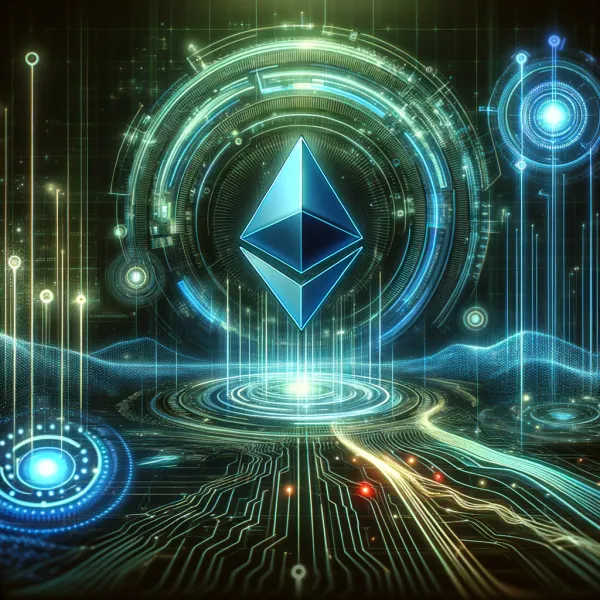GraphLinq Crypto Data API

Introduction
GraphLinq is a pioneering blockchain platform that stands out for its unique approach to integrating automation directly within blockchain environments, as well as facilitating seamless interaction with traditional data systems. This platform provides a robust foundation for automating complex blockchain operations and integrating diverse data streams without requiring extensive coding expertise.
Recognizing the innovative potential of GraphLinq, Mobula has extended its API support to this platform, significantly enhancing data accessibility and automation capabilities for users. Through this integration, Mobula’s API not only simplifies the process of accessing and manipulating blockchain data but also opens up new possibilities for users to create sophisticated, automated workflows that bridge the gap between blockchain and traditional data systems.
This article will delve into how Mobula’s API enhances the GraphLinq ecosystem, highlighting the specific features and benefits that support developers, enterprises, and analysts in leveraging blockchain technology to its fullest potential. By providing detailed insights into the capabilities and applications of this integration, we aim to showcase the transformative impact of combining advanced data accessibility with automation in the blockchain space.
Data Offered by Mobula’s API for GraphLinq
Mobula’s API enriches the GraphLinq platform by providing access to a diverse range of data that empowers users to automate and streamline their blockchain operations. This data includes:
- Automation Triggers: Users can set up triggers based on specific data points or events within the blockchain, such as fluctuations in asset prices or changes in wallet balances. These triggers can initiate automated workflows, making the process of managing blockchain activities more efficient and responsive.
- Smart Contract Events: The API provides detailed insights into events emitted by smart contracts on GraphLinq. This enables developers to track contract interactions and outcomes in real-time, which is crucial for applications that depend on the immediate execution of contract terms.
- Integration Points with Traditional Databases: One of the standout features of Mobula’s API is its ability to facilitate seamless integration between blockchain data and traditional databases. This capability allows users to merge blockchain-based data with external data sources, enhancing the depth and context of analytics and reporting.
- Custom Data Feeds: In addition to standard data offerings, Mobula’s API supports custom data feeds that can be tailored to meet the specific needs of different users. This flexibility ensures that enterprises and developers can access precisely the data they need to power their applications and decision-making processes.
By offering these types of data, Mobula’s API for GraphLinq not only simplifies the complexity of blockchain data management but also expands the potential for automation and integration across different systems and platforms. This holistic approach to data accessibility is essential for users looking to leverage blockchain technology more effectively and innovatively.
Data Offered by Mobula’s API for GraphLinq
Mobula’s API enriches the GraphLinq platform by offering a tailored suite of data that is essential for comprehensive blockchain analysis and operations:
- Market Data: The API provides extensive market data including real-time prices, trading volumes, and liquidity statistics across various exchanges. Crucially, it also offers historical market data, which allows users to analyze past market trends, perform backtesting of trading strategies, and gain deeper insights into market dynamics.
- Wallet Data: Access to detailed wallet data is another key feature. This includes current wallet balances and transaction histories. Additionally, historical data for wallet transactions enables users to track changes over time, assess the impact of specific events, and enhance their financial and risk management strategies.
- Metadata: Mobula provides enriched metadata on GraphLinq assets, such as token specifications and transaction details. This data is invaluable for gaining a comprehensive understanding of asset characteristics and blockchain activities.
By focusing on these specific data types, Mobula’s API significantly aids users in navigating the complexities of blockchain data. It supports a wide array of applications, from trading and investment analysis to regulatory compliance and operational oversight, ensuring that GraphLinq platform users can leverage the full potential of blockchain technology.
Integration and Automation Features
Mobula’s API integration with the GraphLinq platform is designed to streamline operations and automate routine tasks, enhancing overall efficiency and user experience:
Seamless Integration: The API is crafted to seamlessly integrate with existing systems and software, facilitating smooth data flows between the GraphLinq blockchain and external applications. This ease of integration is crucial for developers looking to enhance applications with real-time blockchain data or to enrich their systems with deep blockchain analytics.
Automation Capabilities: With Mobula’s API, users can set up automated workflows that trigger actions based on specific data conditions. For example, financial analysts can automate trading strategies that execute trades when certain market data thresholds are met, or system administrators can automate alerts when unusual wallet activities are detected.
Custom Workflow Support: The API supports the creation of custom workflows tailored to the specific needs of businesses and developers. This flexibility allows for the development of unique automation solutions that can significantly improve operational efficiency and responsiveness to market changes.
Data-Driven Decision Making: By automating data collection and analysis, Mobula’s API enables more dynamic and informed decision-making processes. Users can leverage automated reports and real-time dashboards to stay updated with the latest trends and metrics, reducing the time and effort required for manual data analysis.
These integration and automation features provided by Mobula’s API not only make it easier for users to manage and utilize blockchain data but also empower them to create more intelligent, responsive, and efficient systems on the GraphLinq platform.
Use Cases for Developers and Enterprises
The versatility of Mobula’s API on the GraphLinq platform unlocks a broad array of practical applications for both developers and enterprises. Here are some of the key ways this powerful tool can be utilized:
Automated Trading Systems: Developers can leverage real-time and historical market data to build sophisticated automated trading systems. These systems can execute trades based on predefined criteria, optimizing trading strategies and improving profitability.
Risk Management Solutions: With access to detailed wallet and transaction data, financial institutions can develop comprehensive risk management tools. These tools can monitor and analyze transaction flows to detect and prevent fraudulent activities, ensuring security and compliance.
Data Analytics Platforms: Enterprises can use the rich data provided by Mobula’s API to power advanced analytics platforms. These platforms can process large volumes of blockchain data to extract insights, identify trends, and inform strategic business decisions.
Portfolio Management Applications: Asset managers and individual investors can benefit from applications that use wallet data to track and manage digital assets. These applications can provide real-time insights into asset performance, help in diversification, and optimize portfolio returns based on historical data analysis.
These use cases demonstrate the wide-ranging impact of Mobula’s API, providing tools that enhance the capabilities of developers and enterprises to innovate and excel within the GraphLinq ecosystem. By facilitating the development of powerful applications and solutions, Mobula’s API helps harness the full potential of blockchain technology for advanced operational and analytical functions.
Advanced Analytics and Insights
Mobula’s API plays a crucial role in enabling advanced analytics and insights on the GraphLinq platform, transforming raw blockchain data into valuable information that can drive strategic decision-making:
Deep Data Analysis: The API facilitates deep dives into blockchain data, allowing users to perform complex analyses that uncover patterns, predict market trends, and assess investment risks. With access to both real-time and historical data, analysts can construct comprehensive models that reflect the current market conditions and historical precedents.
Actionable Insights: By leveraging the detailed market and wallet data provided by the API, users can generate actionable insights that inform business strategies and operational adjustments. These insights are particularly valuable for optimizing trading algorithms, managing asset portfolios, and enhancing security protocols.
Customized Reporting Tools: Mobula’s API supports the creation of customized reporting tools that can tailor analytics to the specific needs of a business. Whether it’s tracking asset performance, auditing transactions, or monitoring market dynamics, these tools help businesses create precise, relevant reports that aid in decision-making.
Enhanced Predictive Capabilities: With the rich dataset available through the API, users can improve their predictive capabilities. Financial analysts, for example, can use historical market data to forecast future trends and volatility, enabling proactive adjustments to investment strategies.
These advanced analytical features underscore the value of Mobula’s API in empowering users with the knowledge to make informed, data-driven decisions. This capability is essential for leveraging the potential of the GraphLinq blockchain to its fullest, ensuring users and enterprises can stay ahead in the fast-evolving blockchain landscape.
User Experience and Interface
Mobula’s API significantly enhances the user experience for those interacting with the GraphLinq blockchain by providing a streamlined interface and intuitive interaction capabilities:
Simplified Data Access: The API is designed to make blockchain data more accessible and easier to understand. Users can navigate through complex data sets with ease, thanks to a user-friendly interface that simplifies queries and data retrieval. This accessibility is crucial for users who may not have deep technical expertise but need to interact with blockchain data effectively.
Interactive Dashboards: Mobula’s API supports the development of interactive dashboards that visualize blockchain data in real-time. These dashboards can be customized to display various metrics and data points, such as market trends, wallet activities, and asset performance, providing users with a comprehensive overview at a glance.
Responsive Design: The interface provided by Mobula’s API is responsive, meaning it adapts to different devices and screen sizes. This flexibility ensures that users can access and interact with blockchain data on any device, enhancing the usability and reach of applications built on the GraphLinq platform.
Enhanced Data Manipulation Tools: Users benefit from advanced data manipulation tools that allow for the filtering, sorting, and analysis of data directly within the interface. These tools help users drill down into the data, perform detailed analyses, and extract specific insights without needing extensive data processing skills.
By focusing on these aspects of user experience and interface design, Mobula’s API not only makes it easier for users to access and utilize GraphLinq blockchain data but also enhances their ability to make informed decisions based on that data. This user-centric approach is essential for fostering engagement and facilitating the adoption of blockchain technology across various sectors.
Enhanced Customization and Scalability
As Mobula continues to develop its API capabilities for the GraphLinq platform, the focus is on significantly enhancing customization options and ensuring the API can scale to meet the growing demands of users:
Advanced Customization Options: Future updates will include more sophisticated customization features that allow users to tailor the API to their specific needs. This means more flexibility in configuring data feeds, setting up automation rules, and integrating with existing systems. Such customization will enable businesses and developers to harness blockchain data more effectively, matching their unique operational requirements.
Scalability Enhancements: To accommodate the expanding scope of blockchain projects and the increasing complexity of data demands, Mobula is committed to improving the scalability of its API. This involves optimizing the API’s architecture to handle larger datasets and more simultaneous users without sacrificing performance.
Dynamic Adaptation Features: Recognizing the dynamic nature of blockchain technology, Mobula plans to implement features that allow the API to adapt more fluidly to changes in the GraphLinq blockchain ecosystem. This includes smart caching mechanisms, predictive data loading, and machine learning algorithms to predict user needs and pre-fetch relevant data.
Developer Collaboration Tools: Enhancements are also planned for tools that facilitate better collaboration among developers. This includes shared workspaces, version control integrations, and real-time data sharing capabilities, making it easier for development teams to work together on complex projects.
Continuous Learning and Adaptation: Mobula aims to incorporate continuous learning systems that will allow the API to improve its operations based on user interactions and feedback. This approach ensures that the API evolves and adapts, offering smarter and more intuitive features over time.
These enhancements are designed to ensure that Mobula’s API remains a cutting-edge tool for users on the GraphLinq platform, providing them with the necessary resources to innovate and scale their applications efficiently. This commitment to continuous improvement reflects Mobula's dedication to supporting the growing and diverse needs of the blockchain community.
Conclusion
The integration of Mobula’s API with the GraphLinq platform represents a significant leap forward in blockchain technology utilization. By providing comprehensive data access, advanced analytics, and enhanced automation capabilities, Mobula’s API empowers developers, enterprises, and analysts to harness the full potential of blockchain data. The API's robust features and user-friendly interface facilitate a wide range of applications, from automated trading systems to sophisticated risk management tools, all tailored to improve operational efficiency and decision-making processes.
As we look to the future, Mobula is committed to ongoing enhancements and innovations that will continue to expand the API's capabilities and adapt to the evolving needs of the GraphLinq community. With plans for advanced customization options, increased scalability, and dynamic adaptation features, Mobula aims to keep its API at the forefront of blockchain technology, ensuring it remains an invaluable tool for users.
We encourage all interested parties to explore the capabilities of the Mobula API, engage with its diverse functionalities, and consider how it can be integrated into their blockchain strategies. By leveraging this powerful tool, users can unlock new levels of efficiency and innovation, driving the success of their projects on the GraphLinq platform.
Get started here




